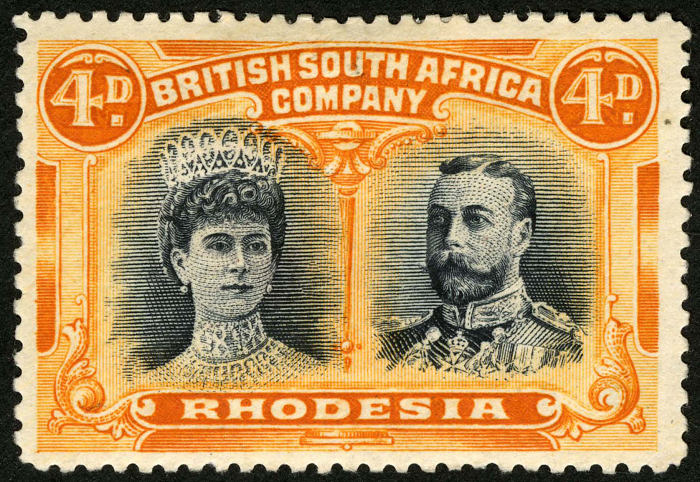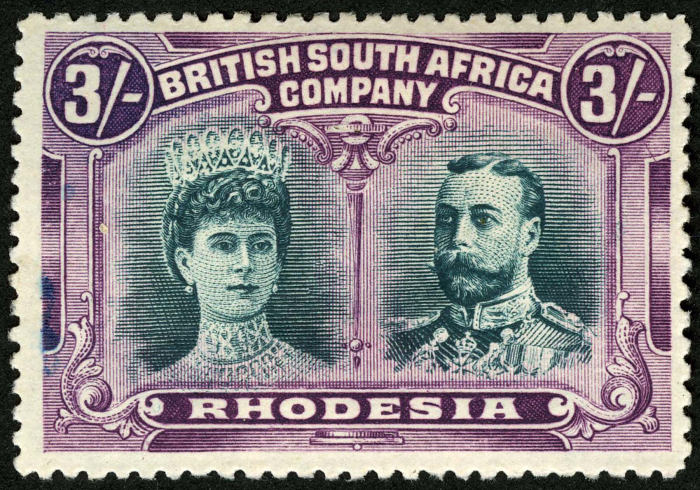

King George V had only been on the throne for five months when the first definitive series bearing his portrait appeared. Long before stamps of the new reign were issued in Great Britain itself, or in its dominions such as Canada or New Zealand, they made their debut in Rhodesia. The series, which became known and loved as the 'Double Heads', was one of the most beautiful of the period. The series of stamps was also notable for comprising the very first stamps inscribed with that country's name.
Located in southeast Africa, Rhodesia was the land governed by the British South Africa Company, which had been formed by Cecil Rhodes in 1889. It began issuing stamps in 1892, bearing the name of the company rather than that of the territory.
Originally Rhodes called this land Zambezia, after the great river, but in 1905 he decided to name it after himself, and the existing series of stamps was overprinted 'Rhodesia' from 1909. The company name was retained in the definitive series which made its debut in November 1910, but now the name 'Rhodesia' was displayed prominently.


All but the ½-penny, 1-penny and 2½-penny stamps were printed in different bi-color combinations, so an array of all 18 denominations makes a spectacular display. In fact, the basic set had more values than its counterpart in Britain, and included some denominations, such as 3-shilling and 7-shilling-6-penny, which never appeared in any British series.
The 'Double Heads' were replaced in September 1913, after less than three years in use, by small-format stamps portraying the King alone, in the peaked cap of the Admiral of the Fleet. However, the ‘Double Heads’ are regarded to this day as being among the greatest classics of British Commonwealth stamps of the 20th century.
